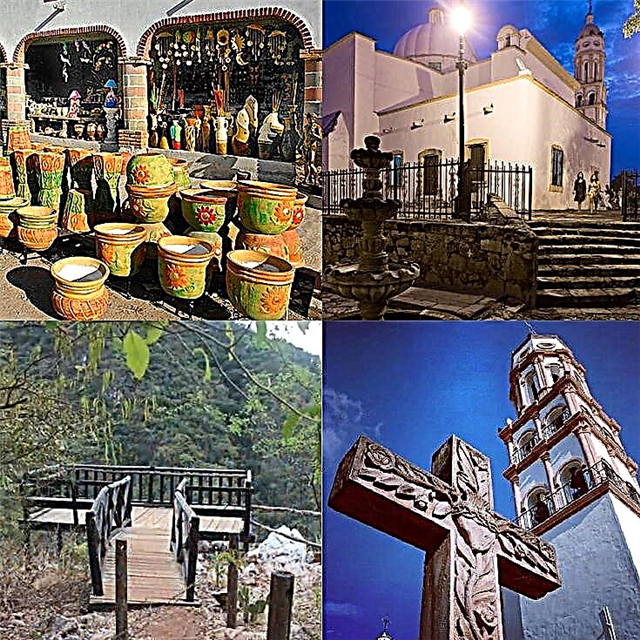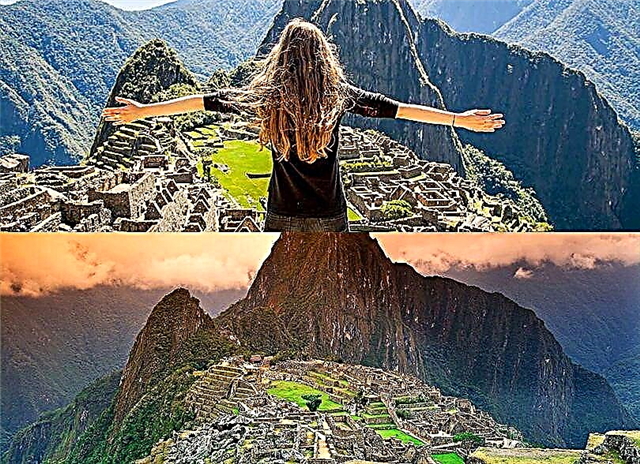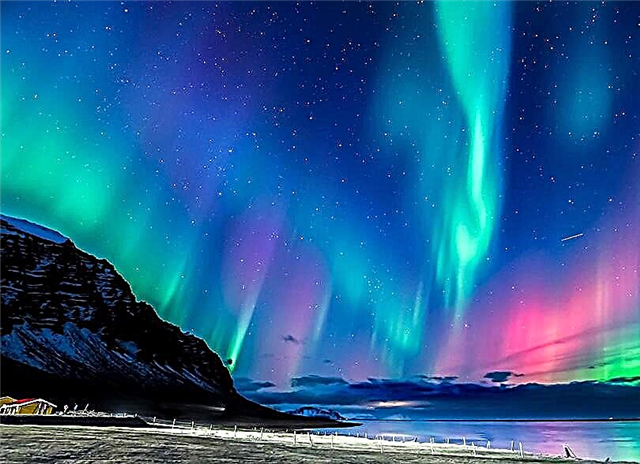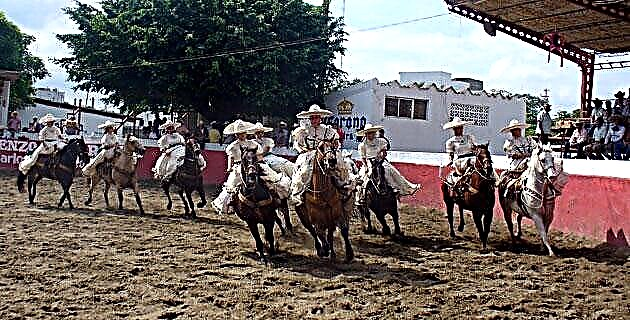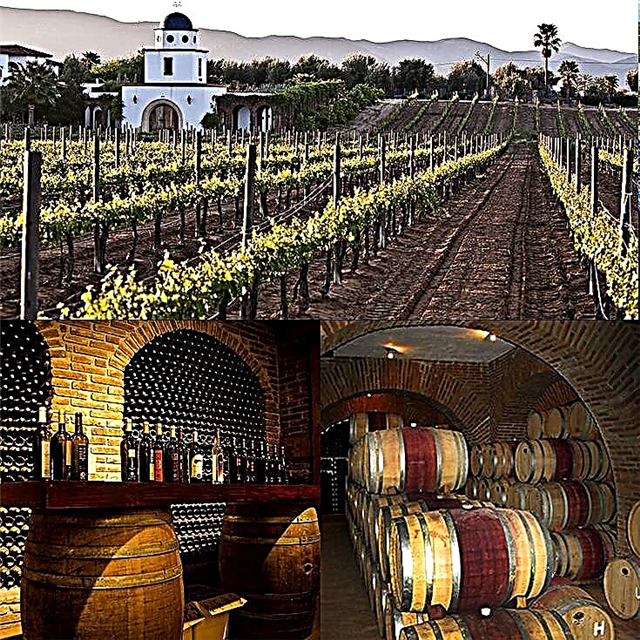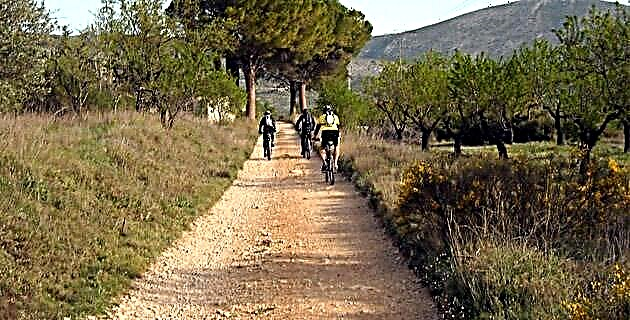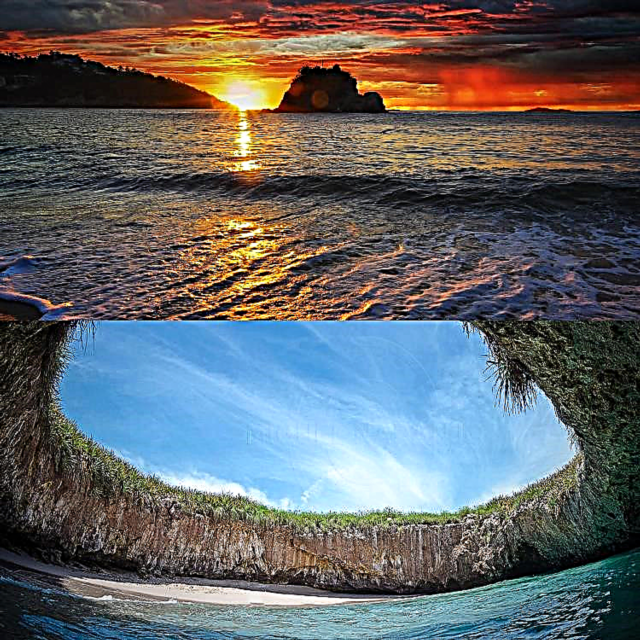In seas, coasts, jungles, mountains and volcanoes, Mexico It has landscapes of magical beauty. These are 25 fantastic landscapes of the Aztec country.
1. El Chiflón Waterfalls, Chiapas
These spectacular Chiapas waterfalls are formed by the San Vicente River in Ojo de Agua, a natural space located about 30 kilometers from the Magical Town of Comitán de Domínguez. The most beautiful waterfall, called Velo de Novia, is 120 meters high and is the highest prize that awaits after ascending a long staircase. In their fall, the waterfalls form ideal pools to take a bath in the clean waters, with the dense vegetation as a paradisiac setting.
2. Centla swamps, Tabasco

In the lowlands of Tabasco in the municipalities of Centla, Jonuta and Macuspana is this wetland, the largest and most important in North America. Its main sources of water are the estuaries of the Grijalva and Usumacinta Rivers, forming lagoons of great beauty and with a striking biodiversity, both in flora and fauna. In its more than 300 thousand hectares, apart from the natural areas, there are the Bird Observation Tower, the Uyotot-Já Interpretation Center, the Punta Manglar ecotourism development and other attractions.
3. The Valley of the Monks, Chihuahua

Los Monjes are curious rock formations that recall the austere Spanish evangelizers who roamed those places trying to convert the indigenous Chihuahuas to Christianity. They are located in the Sierra Tarahumara, which is part of the Sierra Madre Occidental. The figures, which look like hooded friars, form a surreal ensemble, as if the beautiful natural space had suddenly become a congregation of religious praying in the open air.
4. Paricutín Volcano, Michoacán
The youngest volcano in America buried the towns of Paricutín and San Juan Parangaricutiro in 1943. Although it is now inactive, several testimonies of its fury are preserved, the most symbolic being the tower of the church of San Juan, the only building that was partially saved from the avalanche. This 424-meter volcano in the Michoacan valley of Quitzocho-Cuiyusuru, changed the life of the peasant Dionisio Pulido, the first to see how the land opened up before him, and of all the inhabitants of the Purépecha plateau. Now the settlers serve the tourists who are going to know the place and tell the story with their touches of fantasy.
5. Monarch butterfly sanctuaries, Michoacán and the State of Mexico
The Monarch Butterfly amazes for its migratory prowess, incredible in such fragile beings. Travel several thousand kilometers from the cold borderlands between the United States and Canada to its Mexican sanctuaries, escaping the freezing winter weather. The colorful spectacle offered by the beautiful butterflies moves the flow of ecological tourists to the pine and fir forests located in the reserves located in the states of Mexico and Michoacán.
6. Cenotes, Yucatan Peninsula
For the Mayans, cenotes were the gateway to magical and unknown worlds. For today's tourists, they are a feast for the eyes and access to a refreshing swim and the observation of rich aquatic life. The Yucatan Peninsula is the place in the world with the highest concentration of these fascinating bodies of water of karst origin. It would be long to mention the more than 2,000 Yucatecan cenotes. There is a large number in the Riviera Maya, attached to beautiful beaches and archaeological sites. Cancun, Playa del Carmen, and Tulum are excellent places to start a cenote tour.
7. Valley of the Cirios, Baja California

Candles are strange-looking trees that grow in the desert lands of the Baja California Peninsula and to see them leaning against the twilight of a clear sunset is a postcard of incomparable beauty. They are named for their candle-like appearance when the yellow clusters bloom at the top of the tree. The immense valley of more than 2.5 million hectares, is mainly in the state of Baja California, although it also touches Baja California Sur. It is frequented by enthusiastic tourists of arid and open landscapes.
8. Xel-Há, Quintana Roo
The Quintana Roo cove of Xel-Ha has earned a reputation as the largest natural aquarium on the planet. In the beautiful and rich ecosystem the waters of a river merge with the Mexican Caribbean. The place, with the category of Ecological Park, is located in the Riviera Maya, 120 kilometers from Cancun. In the clear waters of this diving sanctuary it is possible to see more than 70 species of aquatic fauna. Nearby are the cenotes of Paraíso and Aventura, and in the surroundings there are paleontological sites of interest where fossils of extinct prehistoric species can be seen.
9. Rasa and Tiburon Islands, Sea of Cortez
The Gulf of California is the world's preferred habitat for some species of birds. La Rasa is just one of the nearly 900 islands and islets in the Sea of Cortez, but it is preferred by 9 out of 10 gray seagulls and elegant terns to breed. The Sonoran island of Tiburon is the largest in Mexico and is an ecological reserve managed by the Seri people. These desert islands are a World Heritage Site, mainly for their unique fauna.
10. Petrified waterfalls, Oaxaca

Thousands of years ago, the solids suspended in the carbonated waters that descended these Oaxacan slopes in the Mitla Valley formed these curious 200-meter-high white curtains that look like waterfalls in the distance but are rocky structures. In the upper part of the mountain called the Amphitheater there is a network of springs through which liquid water flows, forming delicious natural pools. The inhabitants of the valley call the waterfalls "Hierve el Agua". It was a sacred Zapotec site and some vestiges of a 2,500-year-old irrigation system are still preserved.
11. Sótano de las Golondrinas, San Luis Potosí
This fascinating abyss of more than 500 meters deep located in the Huasteca Potosina was formed by the erosive action of water over millions of years. The vertigo cavity is the habitat of several species of birds, mainly swifts, although the bird that stayed with the name was the swallow. Other risky flying beings that venture into the unique pit are the bat and the cave parrot. They leave in beautiful noisy flocks at dawn, in search of food, returning home at dusk.
12. Nevado de Toluca, State of Mexico
This extinct Toluco volcano of almost 4,700 meters above sea level, called Xinantécatl by the natives, has been a sacred place since pre-Hispanic times. In the cavity of the crater there are two beautiful lagoons formed mainly by the melting of the snowy peak. The El Sol lagoon is greenish in color and La Luna is bluish in color. On the beautiful slopes of the volcano, between forests and grasslands, mountaineering, hiking, cycling and other mountain sports and entertainment are practiced. If you want something more traditional, you can also go horseback riding.
13. Tamul Waterfall, San Luis Potosí
This waterfall of the Huasteca Potosina, 105 meters high, is formed by the waters of the Gallinas River when it descends towards the canyon through which the Santa María River runs. Downstream, the stream changes its name to Río Tampaón. In times of high water, the spectacular waterfall reaches a width of 300 meters. The river can be reached near the foot of the waterfall by navigating in small boats and from the town of El Sauz the ridge can be reached by land.
14. Copper Canyon, Chihuahua

The abysses of these Chihuahuan canyons far exceed those of the Grand Canyon of Colorado in depth. In the past, copper ore was mined at the bottom of several of these cliffs, from which the name comes. Urique has 1879 meters; La Sinforosa, 1830 and Batopilas, 1800, among the best known. These places are the ancestral home of the Tarahumara people. Batopilas is also a Mexican Magical Town of beautiful colonial mansions, dating from its heyday with the exploitation of silver. In the ravines, apart from admiring the vertigo immensities, you can go up the longest zip lines in Mexico and you also have a funicular.
15. Sumidero Canyon, Chiapas
At the bottom of this impressive hollow, 1,300 meters below, you can see the current of the Grijalva river moving stormy through its bed. The Sumidero Canyon is located in the Sierra Norte de Chiapas, 5 kilometers from the Chiapas capital, Tuxtla Gutiérrez. Apart from being ecstatic over the precipice, visitors to the national park can travel the river in boats and admire the richness of flora and fauna. Ceibas, oaks and other trees offer their fronds to anteaters and monkeys, while hawks and eagles soar higher up. Between land and water you can see herons, ducks and perhaps an alligator.
16. Basalt Prisms, Hidalgo
These unique rock formations of Santa María Regla, Hidalgo, filled Alexander Von Humboldt with admiration during his trip to America in the 19th century. They are huge crystallized basalts in prisms of up to 6 faces, some with heights of more than 40 meters. They are in curious vertical, horizontal and inclined formations, as if they were large pieces of reinforced concrete placed by the hand of man and not a natural wonder sculpted by nature. From the prisms some waterfalls emerge whose waters come from the nearby San Antonio Regla dam.
17. Craters of El Pinacate, Sonora
They are part of the El Pinacate and Gran Desierto de Altar Biosphere Reserve, in the Sonoran desert. They are huge cavities of volcanic origin, one of the natural formations on the planet that can be seen at a higher altitude from space. The wasteland is barely home to a few brave plant species because it is one of the areas on the planet where it rains the least and the thermometers go crazy with heat at midday in summer. If you can't go to the Moon when the tourist season opens to the Earth's satellite, these craters will make you feel like traveling the lunar landscape. They are located between the towns of Puerto Peñasco and San Luis Río Colorado.
18. Sima de las Cotorras, Chiapas

It is a jungle hollow 140 meters deep and 180 meters in diameter, surrounded by greenery, in the Chiapas municipality of Ocozocuautla. From the heights it seems that it had been perforated by human action, but it is a natural subsidence made by water, in a similar way to how cenotes are formed. Apart from the hundreds of noisy parrots that have the chasm as their habitat, inside there are cave paintings from the Zoque culture. If you don't feel like rappelling, you can opt for something with less adrenaline, like walking or just watching.
19. Iztaccíhuatl-Popocatépetl National Park, State of Mexico
The Izta and the Popo were living beings for pre-Columbian civilizations. The truth is that the emblematic Mexican volcanoes throb with life and vigor, with their rich flora and fauna and their streams of water flowing towards the flat lands. They are protected areas to take care of their biodiversity, in which the teporingo or volcano bunny, the white-tailed deer and the wild hen stand out. In some of its areas you can go hiking and hiking. Snowy peaks are challenges for mountaineers.
20. Cuevas de Naica, Chihuahua

The selenite crystals (gypsum mineral) found inside the Naica silver and lead mine, in the Chihuahuan town of the same name, are the most spectacular in the world, due to their perfection and size. At their length of up to 13 meters and their width of between one and two meters, which make them the largest mineral crystallizations discovered on Earth, the incredible picture is completed by some showy arrangements. Unfortunately, this natural wonder is restricted because it is 300 meters deep, with temperatures of 60 degrees and almost 100% humidity.
21. Ría Lagartos, Yucatán
This semi-enclosed body of water, fed by several freshwater sources and connected to the Gulf of Mexico, is the sanctuary of the Caribbean pink flamingo, a beautiful aquatic bird, which made this ecosystem its particular habitat. The hundreds of thousands of pink flamingos constitute the main postcard of this Biosphere Reserve located between the Yucatecan municipalities of Río Lagartos, San Felipe and Tizimín. Tour operators offer rides along the estuary.
22. Lagunas de Montebello National Park, Chiapas

It is a set of several dozen lagoons with waters ranging from green to turquoise blue, nestled in the Highlands of Chiapas, in the municipalities of Independencia and La Trinitaria, near the Guatemalan border. The paradisiacal landscape is completed by coniferous forests and other trees, dotted with beautiful floral plants. Apart from observing biodiversity, in the park you can practice entertainment such as hiking and sailing by boat, raft and kayak.
23. Sierra de Órganos, Zacatecas
This arid Zacatecan landscape of the Sierra Madre Occidental owes its name to the curious natural formations similar to musical pipes. The mountain range is located about 30 kilometers from the Magic Town of Sombrerete and has been a frequent location for advertising videos and films and television. It has accommodation cabins and camping spaces
24. Banco Chinchorro, Quintana Roo

This bank of reefs in the Quintana Roo sea is the second largest atoll on the planet. Inside one of its islands there is a beautiful lagoon and in its vicinity there are several sunken ships that over time have become interesting ecosystems. Its 3 main islands are Cayo Centro, Cayo Norte and Cayo Lobos, which are used mainly by artisanal fishermen. It is located about 30 kilometers from the continental coast, in front of the towns of Mahahual and Xcalak.
25. Playa Escondida, Nayarit

This unlikely Nayarit beach located in the Marietas Islands National Park in Banderas Bay, looks like a volcanic crater in the sea, but was sculpted by water erosion. It can only be seen in its splendor from the air and the only way to reach it is by swimming through a tunnel that is very dangerous at high tide. The blue-footed booby bird is a beautiful bird that only lives in this place and in the Ecuadorian Galapagos Islands.

Resources to visit Mexico:
The 45 tourist places in mexico that you have to visit
The 112 towns in Mexico that you have to know
The 30 best beaches in Mexico that you have to know
We hope you have been as delighted as we are with these charming Mexican places, inviting you to leave your opinion in a short note.


